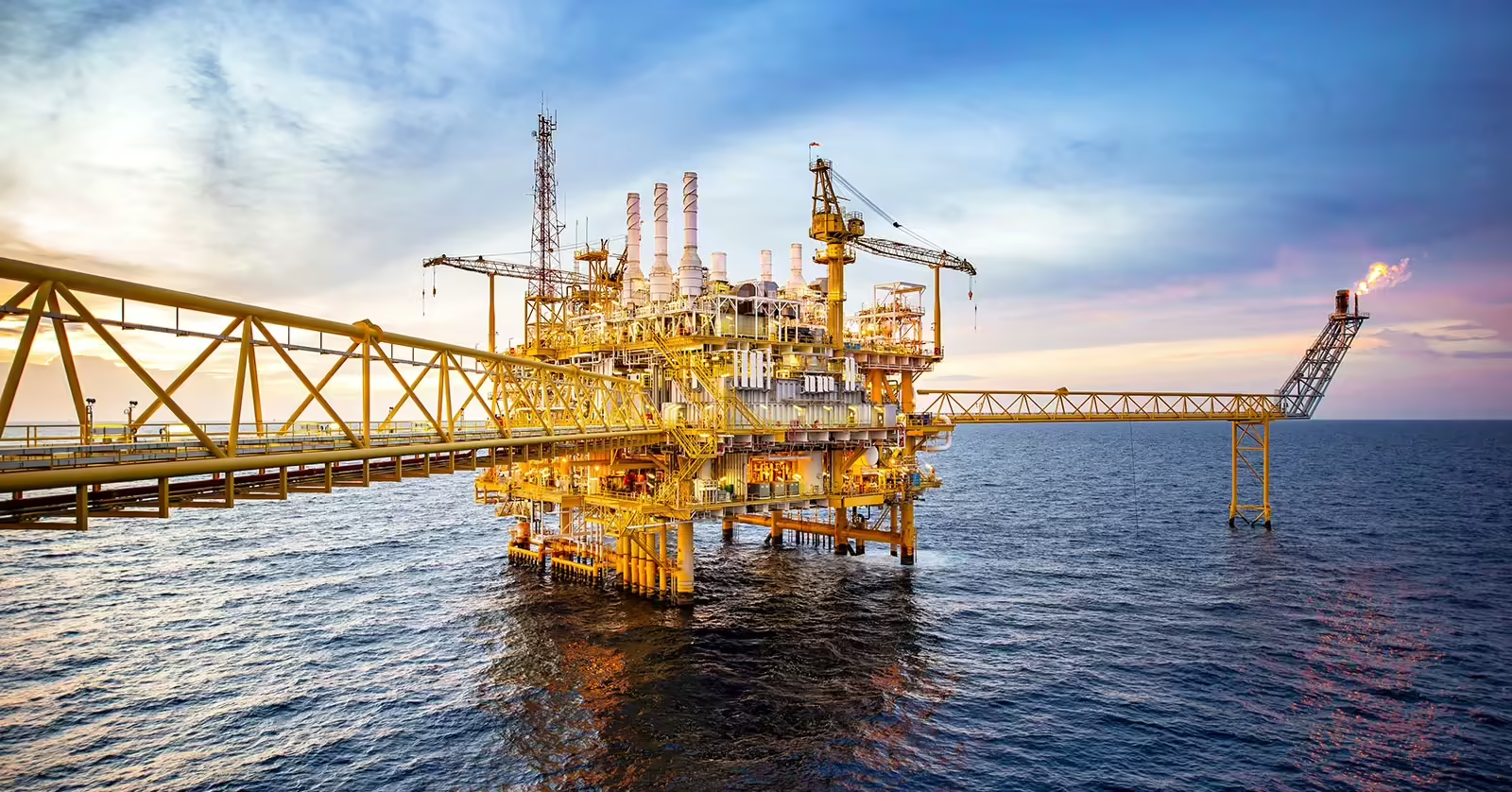Annual Oil Rig Deaths and Disasters
February 21, 2023

Working on an offshore oil drilling rig can be an extremely dangerous job. The risks involved in this line of work are varied and include environmental hazards, physical dangers, and long-term health risks. The working conditions on an offshore oil rig are often harsh, with extreme weather conditions, high winds, and rough seas. Workers are also at risk of malfunctioning equipment, falls, explosions, and fires, as well as being exposed to toxic chemicals and other hazardous materials. The risk of injury or death is significant, and workers must be highly trained and prepared to respond quickly in emergencies.
Families of loved ones working offshore on an oil drilling rig can be significantly affected by their absence and the inherent risks associated with the job. The demanding and often dangerous nature of offshore oil drilling work means that workers can spend weeks or months away from their families, which can significantly impact their loved ones.
When a loved one is injured or killed while working offshore, the impact on their family can be devastating.
In the case of an injury, families may need to provide care for their loved ones and adjust their schedules and finances to account for the time and expense of recovery. They may also experience feelings of stress and anxiety related to the long-term impact of the injury on their loved one’s health and well-being. If a loved one is killed while working offshore, the impact on their family can be particularly profound. The emotional trauma of losing a loved one in such a sudden and unexpected way can be overwhelming, leading to feelings of shock, grief, and anger.
In either case, there is a need to navigate the financial and legal consequences of the injury or death, such as arranging for funeral expenses, handling insurance claims, and filing for compensation. Furthermore, the loss of a loved one can have long-lasting effects on the family. Children may struggle with the absence of a parent, and spouses may experience financial stress and other challenges related to adjusting to life without their loved ones. Families may also experience ongoing mental health challenges such as depression, anxiety, and post-traumatic stress disorder.
How Frequent Are Oil Rig Deaths?
Offshore oil rig work is inherently dangerous, and unfortunately, fatalities do occur. According to the most recent data from the Bureau of Safety and Environmental Enforcement (BSEE), there were a total of 19 fatalities and 106 injuries in the offshore oil and gas industry in the United States from 2015 to 2020. The chart also shows that the number of fatalities has fluctuated over time, with a low of two fatalities in 2015 and a high of 11 fatalities in 2019. In terms of injuries, the chart shows that the number of injuries has also fluctuated over time, with a low of 12 injuries in 2015 and a high of 34 injuries in 2019.
The causes of offshore oil rig fatalities can vary widely and may include oilfield accidents such as falls, fires, and explosions, as well as drowning and other maritime accidents. The BSEE notes that the most common causes of fatalities in the offshore oil and gas industry include falls and struck-by/caught-in/between hazards, highlighting the need for strict safety protocols and training to prevent accidents.
Working on an offshore oil drilling rig comes with a range of risks that can result in injury or even death. Some of the most common injuries that offshore oil rig workers routinely face include:
- Burns: Offshore oil drilling workers can be exposed to high temperatures and flames (oil rig explosion), which can result in severe burns.
- Fractures: The heavy machinery and equipment used on oil drilling rigs can cause fractures, particularly in the hands and feet.
- Cuts and Lacerations: Offshore oil drilling workers are at risk of cuts and lacerations from sharp tools, equipment, and machinery.
- Head Injuries: Workers can suffer head injuries from falling objects, explosions, and other accidents on the rig.
- Back Injuries: The heavy lifting and repetitive movements involved in offshore oil drilling can cause back injuries, including sprains and strains.
- Eye Injuries: Workers are at risk of eye injuries from flying debris, exposure to chemicals, and other hazards.
- Respiratory Problems: Exposure to toxic chemicals and other hazardous materials can result in respiratory problems such as asthma and lung damage.
- Drowning: Workers who fall overboard or are involved in a maritime accident can drown.
- Hypothermia: Offshore oil drilling often takes place in cold and harsh conditions, putting workers
- at risk of hypothermia.
- Heatstroke: Working in hot and humid environments can cause heatstroke and other heat-related illnesses.
- Crush Injuries: Workers can suffer crush injuries from heavy machinery, equipment, or falling objects.
- Musculoskeletal Disorders: Repetitive motions and heavy lifting can cause musculoskeletal disorders, such as carpal tunnel syndrome and tendonitis.
- Fatigue: The long working hours and demanding work environment can cause fatigue, which can increase the risk of accidents and injuries.
- Electrical shocks: Workers can be exposed to electrical shocks (electric shocks) from faulty equipment, power lines, and lightning strikes.
- Mental health problems: The isolation, stress, and high-pressure environment of offshore oil drilling can result in mental health problems such as anxiety, depression, and post-traumatic stress disorder.
What Are the Most Common Types of Oil Rig Disasters?
Fires
According to BSEE, there were 17 fires on offshore drilling rigs in the United States from 2015 to 2020. Fires have fluctuated over time, with a single fire in 2017 and five fires in 2018. The majority of fires occur in the Gulf of Mexico.
Collisions
According to BSEE, there were 116 reported collisions in the offshore oil and gas industry in the United States from 2007 to 2020. The number of collisions has fluctuated over time, with a low of one in 2009 and a high of six in 2018.
Explosions
According to BSEE, 55 explosions were reported in the offshore oil and gas industry in the United States from 2007 to 2020. The number of explosions has fluctuated over time, with a low of two in 2010 and a high of 11 in 2019.
There are a variety of factors that can contribute to fires and explosions on offshore drilling rigs. Here are ten possible causes:
- Electrical faults or malfunctions in electrical equipment.
- Malfunctioning or overheating machinery and equipment, such as generators or motors.
- Human error, such as using equipment incorrectly or not following safety procedures.
- Flammable liquids or gases come into contact with a heat source or spark.
- Explosions or fires caused by welding or cutting activities.
- Lightning strikes or other weather-related events.
- Smoking or other ignition sources in areas where flammable materials are present.
- Poorly maintained or faulty piping or valves, leading to leaks and potential ignition sources.
- Fuel storage tanks or lines that are not properly secured or maintained.
- Corrosion or wear and tear that leads to structural damage or equipment failure.
It is important for offshore drilling rig workers to be aware of these potential causes and to take appropriate precautions to prevent fires or oil rig explosions from occurring. Companies in the offshore oil and gas industry must also prioritize safety and take steps to mitigate risks and prevent fires from occurring.
How Are Oil Rig Deaths and Disasters Caused?
There are many possible causes of oil rig deaths and disasters, but here are ten common ones:
- Equipment Failure: Equipment failure is a common cause of oil rig accidents. This can include problems with drilling machinery, safety systems, or other critical equipment.
- Human Error: Human error is another common cause of oil rig accidents. This can include mistakes made by crew members, such as miscommunication, lack of training, or poor decision-making.
- Fire and Explosions: Fires and explosions are some of the most dangerous accidents that can occur on an oil rig. These can be caused by a variety of factors, including gas leaks, electrical problems, and other hazards.
- Structural Failure: Structural failure can occur if an oil rig is not adequately maintained or exposed to harsh weather conditions. It can result in collapses or other structural damage that can cause serious injuries or fatalities.
- Weather-Related Incidents: Severe weather conditions such as hurricanes, storms, or high winds can also cause accidents on an oil rig.
- Negligence: Negligence can occur when safety protocols and regulations are not followed or operators fail to take necessary precautions to prevent accidents.
- Improper Training: Poor or lack of training can lead to accidents and injuries, especially when workers are not properly trained to operate equipment or handle emergencies.
- Communication Breakdown: Miscommunication or lack of communication can lead to confusion, misunderstandings, and errors that can cause accidents.
- Insufficient Maintenance: Insufficient maintenance can result in equipment malfunctions, structural damage, and other issues that can lead to accidents.
- Lack of Oversight: Lack of oversight and inadequate safety protocols can result in accidents, injuries, and fatalities on oil rigs. This can include failures in inspection, regulation, or management.
How Is Fault Determined in an Offshore Accident or Death?
If you or a loved one have been injured or killed while working on an offshore rig, you may have grounds to hold the responsible company liable for the damages you have suffered. To pursue legal action, you would typically need to provide evidence showing that the company was at fault for the accident or incident that caused the injury or death.
Here are some things you may need to show to hold a company responsible:
Negligence: You would need to demonstrate that the company was negligent in their actions or inactions and that this negligence led to the injury or death. This might include showing that the company failed to maintain equipment, ignored safety regulations, or failed to properly train employees.
Breach of Duty: You would need to show that the company had a legal duty to provide a safe work environment and that they breached that duty by acting negligently or recklessly.
Causation: You would need to prove that the company’s negligence was the direct cause of the injury or death and that the injury or death would not have occurred without their actions or inactions.
Damages: You would need to provide evidence of the damages you or your loved one suffered, such as medical bills, lost wages, or pain and suffering. In the case of a wrongful death, you may be able to seek damages for funeral expenses and loss of companionship.
It is important to note that pursuing legal action against an offshore rig company can be complex and challenging, as these companies often have teams of lawyers and significant resources to fight claims. The offshore injury attorneys at Morrow & Sheppard LLP can help guide you through the legal process and fight for your rights.
Daniel Sheppard is licensed to practice personal injury law in Texas and Louisiana. Daniel takes pride in providing exceptional service to clients who were seriously hurt on the job and brings his relentless work ethic into the office and the courtroom. Learn more about Daniel.
- Home
- |
- Wrongful Death
- |
- Annual Oil Rig Deaths and...
















































